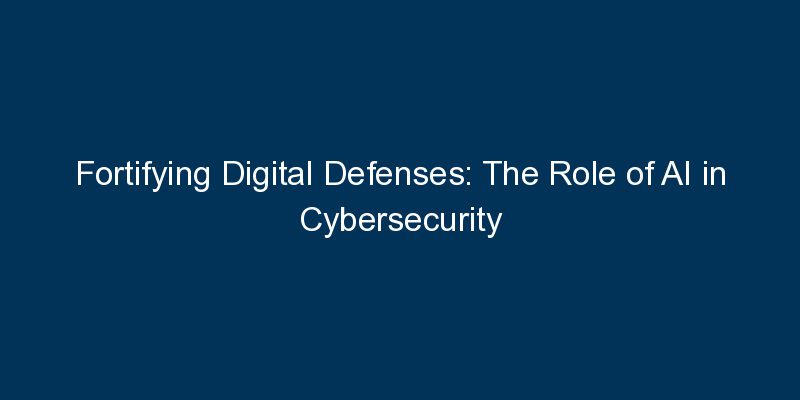In the ever-evolving landscape of cybersecurity, artificial intelligence (AI) has emerged as a potent ally, revolutionizing the way organizations safeguard their digital assets. This blog delves into the diverse applications of AI in cybersecurity, highlighting its pivotal role in detecting and mitigating cyber threats.
Introduction: The Cybersecurity Challenge
Guarding the Digital Frontier
As the digital landscape expands, so does the complexity of cyber threats. Organizations face an ever-growing challenge to secure their networks, systems, and sensitive information from sophisticated cyberattacks. In this dynamic environment, AI has become a crucial component in the arsenal of cybersecurity professionals.
I. Threat Detection and Prevention: The AI Sentry
Machine Learning Algorithms
AI, specifically machine learning algorithms, plays a central role in threat detection and prevention. These algorithms analyze vast amounts of data to identify patterns indicative of potential threats. By learning from historical data, AI can recognize anomalies and suspicious activities, enabling swift and proactive responses to emerging cyber threats.
II. Behavioral Analysis: Unmasking Anomalies
Understanding User Behavior
AI-powered behavioral analysis goes beyond traditional signature-based detection methods. By understanding normal user behavior, AI systems can identify deviations that may indicate a security threat. This approach is particularly effective in detecting insider threats and sophisticated attacks that attempt to mimic legitimate user activities.
III. Endpoint Security: Empowering Devices
Securing Every Endpoint
AI is instrumental in bolstering endpoint security, protecting individual devices connected to a network. Endpoint detection and response (EDR) solutions leverage AI to monitor and analyze activities on devices, swiftly detecting and responding to potential threats. This decentralized approach enhances overall network security.
IV. Automated Incident Response: AI’s Rapid Reflexes
Swift Action in the Face of Threats
In the event of a cybersecurity incident, AI facilitates automated incident response. AI-driven systems can execute predefined responses, such as isolating affected systems, blocking malicious activities, and alerting security teams. This rapid reflex capability minimizes response times and mitigates the impact of cyber threats.
V. Threat Intelligence Analysis: AI’s Data Mastery
Processing and Analyzing Threat Intelligence
The volume of threat intelligence data is vast and continually evolving. AI excels in processing and analyzing this information, identifying emerging threats and providing valuable insights to cybersecurity professionals. This proactive approach allows organizations to stay ahead of the evolving threat landscape.
VI. Phishing Detection and Email Security: AI’s Watchful Eye
Enhancing Email Security
Phishing attacks remain a significant cybersecurity concern. AI is employed in email security solutions to detect phishing attempts by analyzing email content, sender behavior, and other contextual factors. This watchful eye helps prevent users from falling victim to deceptive email-based threats.
Conclusion: AI, the Guardian of the Digital Realm
In the dynamic and perilous realm of cybersecurity, AI stands as a formidable guardian. Its ability to analyze vast datasets, detect anomalies, and respond rapidly to evolving threats makes it an indispensable ally for organizations seeking to fortify their digital defenses. As technology advances, the role of AI in cybersecurity will continue to evolve, ensuring a resilient defense against the ever-changing landscape of cyber threats.



















Comments